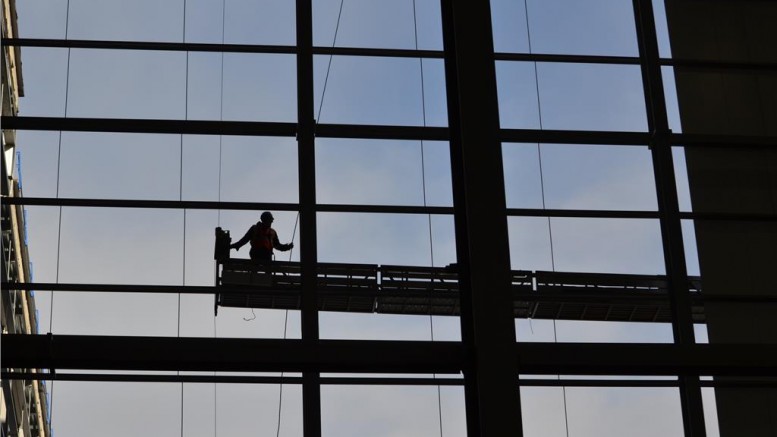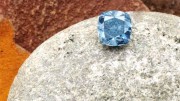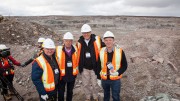Since it raised $946 million last July to build its Renard diamond mine in Quebec, Stornoway Diamond (TSX: SWY) has kept construction and engineering at the project on time and on budget.
In fact, the company has had to meet its milestones in order to access a total of US$250 million in upfront streaming payments that are part of the larger financing, said president and CEO Matt Manson at the company’s annual general meeting in October.
Stornoway has so far received two tranches of the streaming financing: US$80 million in March and U$80 million in September. Another US$90 million is still to come next March.
“If you want any external validation that we’re doing our job, if you want to go beyond management’s rhetoric and talk to some external validation that we’re on budget and on schedule, it’s that (being able to access that money),” Manson told shareholders. “Because we have to demonstrate with third-party engineers that we are on budget and on schedule to have that money fund.”
The company is so far running ahead of plan, with construction 47.4% completed at the end of September as opposed to the scheduled 42.9%.
Stornoway has also come out ahead with the fall in the Canadian dollar. About half of its $946-million financing was raised in U.S. dollars at a time when the dollar was at US92¢.
“This is an example of good timing in the mining business and we’re very fortunate and happy to have it, but what it means is the balance sheet is stronger now than it would have been looking twelve months ago, when we raised all the money.”
Only about 15% of the diamond developer’s costs are in dollars.
Stornoway expects plant commissioning to begin in the second half of 2016, with commercial production slated for the second quarter of 2017.
“By that time, we should have about $101 million in room for error because of the exchange rate,” Manson said. The company’s forecasts use an US80¢ dollar, which is higher than the current US76¢.
Manson noted that the company’s timing has been good in other respects as well. While Stornoway’s financing deal was pulled together in a tough market, the market for debt and equity has since deteriorated. “We couldn’t do that deal this year,” he acknowledged.
Lastly, Stornoway has found that having the only major mine in construction in Quebec — and in all of eastern Canada — comes with advantages, such as “first call” on the best people, contractors and equipment.
In 2011, when the junior conducted the feasibility for Renard, located 350 km north of Chibougamau, there was an 18-month lead time for Caterpillar equipment, Manson recalled. That’s now down to weeks or a couple of months.
Along with bottlenecks and costs declining over the past few years, however, so have diamond prices.
“The diamond market is the only cloud on our horizon,” Manson said. “It’s been a tough twelve months. Diamond prices are down versus 2014 (by) about 20%.”
Prices are now lower than they were in 2011, but only in U.S. dollars.
“We’re still ahead of where we expected to be in our local operating currency,” Manson noted.
Resource update
In September, Stornoway updated the resource estimate for Renard, increasing indicated resources by 11% to 30.2 million carats (including reserves), up from 27.1 million carats. The indicated resource is contained in 42.6 million tonnes grading 71 carats per hundred tonnes (cpht).
The increase was achieved by upgrading inferred resources at the Renard 2 kimberlite down to 700 metres depth, and by adding more than 4 million tonnes of lower-grade Country Rock Breccia material from Renard 2. The CRB material was previously classified as stripping waste or mining dilution.
Inferred resources stand at 24.5 million tonnes grading 54 cpht for 13.4 million carats, a decrease of 20.8%.
The new resource will be used to update the mine plan at Renard in the second quarter of 2016. The new plan will look at an extended mine life at Renard, deeper open pits at Renard 2 and Renard 3, and the inclusion of indicated resources at Renard 65 for open-pit mining.
Probable reserves at Renard currently stand at 17.9 million carats in 23.8 million tonnes grading 75 carats per hundred tonnes supporting an 11-year mine life. A 2013 feasibility update pegged the project’s after-tax net present value at $391 million (at a 7% discount rate) and its after-tax internal rate of return at 16.3%.
— This article originally appeared in the November 2015 issue of Diamonds in Canada.




Be the first to comment on "Stornoway’s ‘good timing’ at Renard"